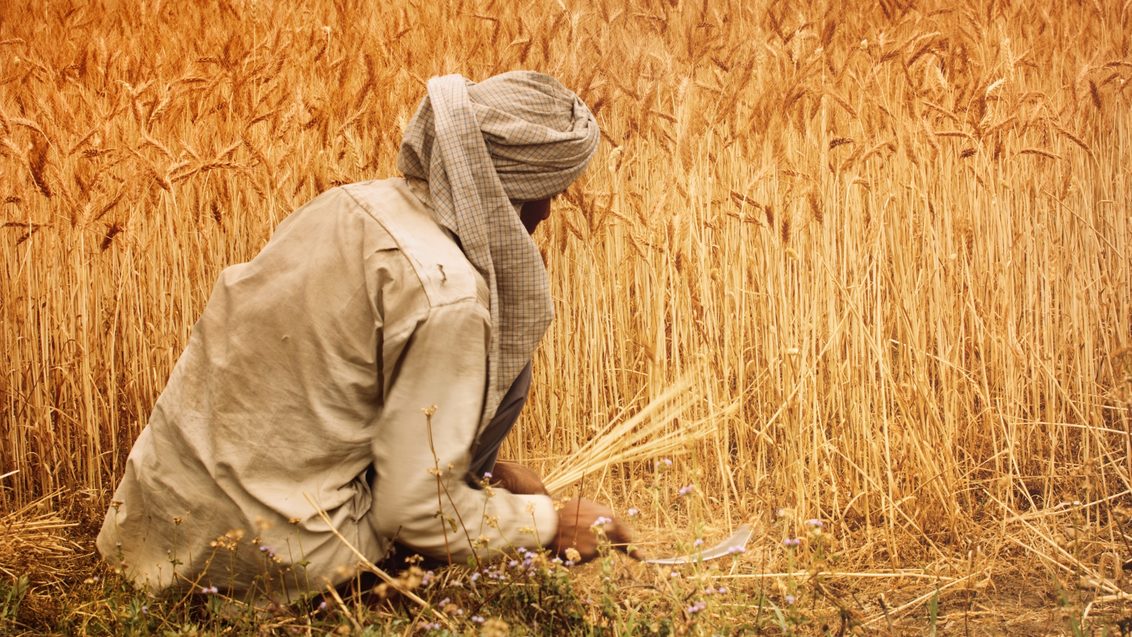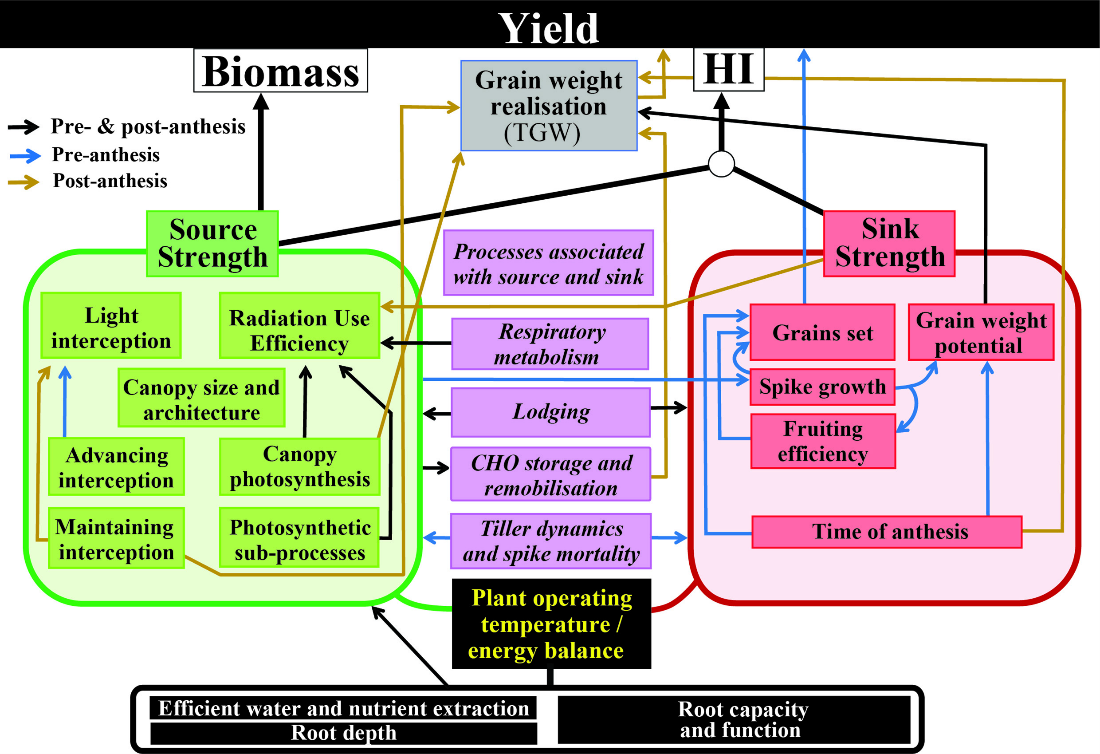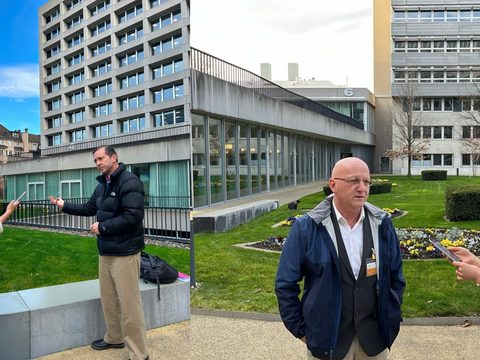Grain Expectations: raising wheat yield by 50%

Wheat yield needs to rise, around the world, and rise faster than today. Achieving that is the goal of The International Wheat Yield Partnership (IWYP). We are a founding member of this public-private initiative focused on increasing the crop’s photosynthetic efficiency. What has happened so far, and what is in view? Our Chief Scientist Mike Robinson shares his insights.
Syngenta Foundation: IWYP aims to increase the genetic yield potential of wheat by 50% in 20 years. How likely is that?
Mike Robinson: IWYP is a global integrator of yield-related native trait (i.e. non-GM) discoveries from national R&D programs. It aims to identify step-changes in yield potential and to convert these into international benefits. Field trials so far have reported an average yield improvement of 2.3% per year, which is twice the previous gain rate. This makes the partners optimistic about achieving that goal.
How is “genetic yield potential” defined and calculated?
It’s a crop’s inherent ability to convert energy into yield through photosynthesis. To calculate it for wheat, we run numerous field trials of lines that include promising traits and their combinations. The Wheat Yield Collaboration Yield Trial network has nearly 100 sites in diverse settings. The study results show how maximum yield potential varies under a wide range of conditions. It’s important to remember, however, that actual yield depends on a range of external factors. These include the local environment and farming practices.
What do you see as IWYP’s key achievements so far?
There have been many! One is the major new investment that it’s attracted. Public and private partners worldwide have already put more than $80 million into yield potential genetics. The program has also successfully created partnerships and alignment with several national programs, maximizing their potential. IWYP helps universities and national programs to channel their innovations into an international effort (see Figure 1).
What else would you highlight?
IWYP has developed three new research facilities. One at CIMMYT in Mexico deals with yield-improvement trait validation. Two in North America and Europe focus on pre-breeding and breeding. Traits are essential in breeding programs: They lead to the development of commercially viable wheat varieties with desirable characteristics.
One of the most valuable achievements is the development of a “wiring diagram” (see Figure 2). It shows the links between the various parts of a wheat plant that regulate yield potential. Changes in, for example, spikelet length or the size of roots, flag leaf and grain all have an influence. By understanding these factors, scientists can improve photosynthetic efficiency, i.e., the percentage of the sun's energy that gets converted into grain. The wiring diagram helps to identify knowledge gaps and to target new genetic understanding of yield control. Researchers can also apply it to other crops. This approach has been published in significant journals, and we partners plan to continue building on it.
Money, facilities and an innovative approach are all important. But what does the output look like?
Nearly 300 lines of wheat with enhanced yield potential traits. 26 of those lines have gone into breeding. IWYP has also identified over 100 new genetic markers for yield-related traits and has developed more than 25 breeding tools and protocols. These are all results that have been widely communicated by program partners through various channels – by May 2023 these included about 120 research publications. IWYP data are open to all partners and the publications are in the public domain.
The Syngenta Foundation owns neither a lab nor a wheat field. What is its particular role?
We were instrumental in putting the partnership together, focusing on building the public-private elements. Now that the trait discovery phase is over, the Foundation is shifting from an operational focus to supporting some of the later-stage breeding activities. Our aim is to ensure that new varieties are developed that are suitable for smallholders in specific regions. We are concentrating on 13 African countries and four in Asia.

Figure 1 For maximum benefit, IWYP aligns national wheat programs and international research.

Figure 2 A “Wiring Diagram”, here for sink strength determination in the period from the onset of stem elongation to booting. The wires’ thickness reflects the extent of the evidence, their shape indicates the expected magnitude of impact on yield potential. The color reflects the ease/difficulty of exploiting the trait. CHO, TGW and HI stand for carbohydrates, thousand grain weight and, harvest index respectively.
IWYP is exploring lots of different avenues. Which do you think will make the largest contribution(s) to meeting the goal, and why?
Yield potential improvements will likely be based on multiple traits. It may not be clear which of them contributes the most. Breeders today take a multifactorial approach. They first use markers to check if the genetics are included in the crosses. They then typically base further breeding on a combination of phenotypical and genotypical analysis. In other words: Breeders both examine how an organism looks and behaves and analyze the genetic information that determines those traits.
Genetics are only one of several routes to ensuring there is enough wheat to go round. How is the world doing on others, such as the spread of better farming practices?
The CGIAR is investing heavily in improving farming practices. So, too, are many other organizations including the Syngenta Foundation. The challenge lies in finding a way to provide information and support to farmers at scale, particularly pre-commercial smallholders. The Foundation is among the several organizations actively engaged in addressing this challenge.
An IWYP Science Brief about developing more climate-resilient wheat highlights the crucial role of wild relatives. A recent CIMMYT paper focuses on the importance of well-organized gene banks, notably its own. How well is the world able to maximize the benefit of biodiversity when trying to grow enough wheat for the increasing needs?
Wild relatives are a rich source of genetic diversity. The world should continue to use and protect them to address breeding challenges, especially with respect to improved nutrition and climate change. The IWYP has been highly successful in collaborating with hundreds of organizations to gather extensive genetic variation for wheat. This has resulted in quite rapid introduction of significant genetic diversity into gene banks. The outputs of this IWYP initiative will be delivered to public and private breeding programs around the world, thereby improving the genetic diversity of breeding populations.
One declared intention of IWYP is to avoid competition among researchers. Why is that a good idea?
IWYP aims to foster collaboration. This approach allows diverse researchers to bring their discoveries into a system where they can realize their full potential. The combined efforts of a wide range of researchers are what make a difference. The IWYP annual conference gives them all an opportunity for in-depth discussion together.
IWYP is one of several wheat R&D initiatives around the world. How do they all coordinate their activities?
IWYP stands out as the only partnership that focuses on yield potential. Its research activities are complementary to those of other organizations, and it works to avoid overlapping efforts. To ensure coordination, IWYP collaborates with national programs, including universities and local institutes. The partnership’s pre-breeding validation hub at CIMMYT tests traits in different environments. IWYP has established a process for moving these traits into public and private breeding programs. It also, for instance, reports to the G20’s Wheat Initiative (WI), which has some members in common.
Why are there so few IWYP members from Africa, or from Asia outside India?
That is mainly due to the lack of seed companies there. However, IWYP has some executive-level members in those regions with the capacity to direct the breeding process. Additionally, there are about 20 ordinary members without breeding capacity; these are smaller companies that produce and sell seeds. They can participate in field trials and evaluate the output, choosing which varieties to test further for their own portfolios.
How and when are pre-commercial smallholders likely to benefit from IWYP?
There are already examples of how they are benefiting. IWYP trials run in national programs; if a particular variety shows promise, the relevant program takes it on directly. More than 300 IWYP lines have entered national programs; 35 lines were distributed through 117 collaborators in 42 countries. To determine the smallholder benefit more exactly, one would need to investigate how much seed the national programs are producing. Overall, however, it's clear that IWYP is already making a significant impact in improving the yield of wheat. This benefits pre-commercial smallholders as well as larger-scale farmers.
In what ways can research from IWYP yields benefit yield in other cereals?
Research into improving wheat yields can also significantly enhance those of other crops. When we identify major areas that generate improvement and understand their “wiring” (see Figure 2), we can apply the knowledge to other cereals. Additionally, the IWYP approach of investing national funds and creating an international hub for integrating national programs could be applied to other crops. There is lots of potential for mutual benefit in research across species; I hope to see more of this in the future.

